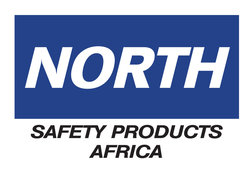Hydration is essential for the body in hot working environments
PRESS RELEASE
Hydration is essential for the body in hot working environments
20 July 2016: Working in hot conditions poses special hazards to safety and health. Heat illnesses combined with dehydration are a direct cause of approximately half of the heat stroke cases among South African miners. It can cause loss of concentration, lower productivity, a decrease in morale and consequently increases costs to a business operation.
North exports manager Hayley Arnesen explains that during heavy work, muscles need more blood flow, which reduces the amount of blood available to flow to the skin in order to release heat. “The body defends itself from heat through breathing, sweating and changing the blood flow. Individuals with high blood pressure or some heart conditions and those who take diuretics may be more sensitive to heat exposure.”
There are a number of conditions that can result due to heat exposure, including heat exhaustion, heat stroke, heat cramps, fainting, or heat rash. “In order to prevent these conditions, it is advisable to replace the fluids you lose from sweating by drinking an electrolyte solution, wearing loose fitting clothing and a hat, and getting sufficient cool air. Businesses should ensure that employees and supervisors have proper training to be able to detect early signs of heat stress and understand the importance of replacing fluids and salt from sweat,” she continues.
Heat exhaustion results from working up a sweat and not replenishing the body with enough fluids. Resting in a cool place and avoiding caffeinated beverages are some of the things that will relieve the condition. Heat stroke, which can result in death, is caused by the failure of the body to regulate its core temperature. In order to reduce the effects, the victim should be moved to a cool area and soaked in cool water, amongst other things.
Heat cramps are painful muscle spasms that occur when a worker drinks a lot of water, but does not replace the salts lost from sweating. Fainting can occur in someone who is not used to working in uncomfortably hot environments. Heat rash usually occurs in hot and humid environments where sweat cannot evaporate easily. It can be prevented by resting in a cool place, keeping skin clean and dry, as well as over-the-counter lotions to ease pain and itching.
Appropriate engineering controls, personal protective equipment and work practices are also imperative to reducing the risk of heat stress. Supervisors should provide enough liquids and ensure that work schedules allow for appropriate rest periods. Employees need to choose a suitable hydration drink that is accessible before, during and after work. The hydration drink will assist in maintaining blood volume, which allows for efficient delivery of oxygen to working muscles and reduces the incidence of muscular cramps.
Arnesen warns that only providing water for hydration may lead to a low blood sodium level, as salts do not get replenished. Workers must consume approximately 300 ml of an electrolyte replacement drink, 20 minutes before possible exposure. The sodium content should be between 25 mg and 70 mg per 100 ml. Intestinal absorption is improved by small volumes of carbohydrates, between 3 g to 5 g per 100 ml. The temperature of the liquid can also impact the absorption rate – cooler drinks are absorbed more easily.”
Dynaforce, which is developed by North Safety, is a rehydration drink that replenishes the body of essential nutrients for those working in hot environments. It is available in four different flavours, including naartjie, tropical, blueberry and cherry grape. “The drink, which comes in a 60 g, 240 g and 25 kg bulk pack, has a potassium content that exceeds that of other similar drinks. The benefit of this is the positive fluid retention effect that the potassium exerts at a cellular level. The powdered drink carries various other vitamins and minerals and has no preservatives. It is available at all North branches,” Arnesen concludes.
Ends
Notes to the editor
To download hi-res images for this release, please visit http://media.ngage.co.za and click the North link to view the company’s press office.
About North Safety Products Africa
North Safety Products Africa (NSPA) is one of South Africa’s leading designers, manufacturers and marketers of personal protection and safety equipment products in the workplace. The company designs, develops and manufactures a comprehensive range of safety equipment. This includes: respiratory equipment; hand protection; hearing protection; eye, head and face protection; height safety; and protective clothing and footwear. North also provides technical and customer support whereby skilled professionals assist businesses with the implementation and management of their company needs. With a global reputation for high quality protective gear, pioneering technology and valuable manufacturing assistance, North prides itself on exceeding client expectations.
North Safety Products Africa Contact
Lizette Kasselman
Group marketing manager
Phone: (031) 705 6085
Email: marketing [at] northsafety [dot] co [dot] za
Web: www.northsafety.co.za
Media Contact
Jonathan Ducie
NGAGE Public Relations
Phone: (011) 867-7763
Fax: 086 512 3352
Cell: 084 709 0167
Email: jonathan [at] ngage [dot] co [dot] za
Web: www.ngage.co.za
Browse the NGAGE Media Zone for more client press releases and photographs at http://media.ngage.co.za

